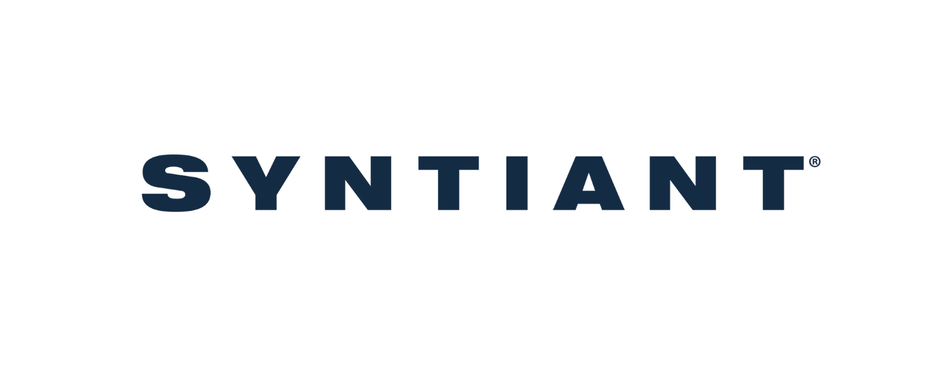Why Edge AI for EV Battery Management
Article #6 of the "Why Edge?" Series. A short guide to how Edge AI can boost electric vehicle performance and safety when applied to the Battery Management System (BMS).

Image credit: Tesla
This is the sixth of a series of articles exploring the benefits of Edge AI for a variety of applications.
EVs are equipped with hundreds of sensors and controllers to measure and process tons of data. As the techniques to make data-driven decisions evolve, the e-mobility industry has taken advantage of Big Data and AI to operate, monitor, and optimize a crucial piece of the EV powertrain: the battery. This article explores how Edge AI can improve Battery Management System (BMS) performance and safety.
The role of BMS in EVs
EVs are highly reliant on the correct battery operation to run safely. The appropriate management of material degradation, electrochemical reactions, temperature, and aging cycles ensures battery longevity, safety, and savings. This is where the BMS comes in.
The BMS controls the battery temperature and cell equalization, charging and discharging, interfacing power electronics, and performs fault analysis. An inappropriate operation of the battery pack or faulty cells raises severe risks for the EV user, such as fire events.
Another critical function of the BMS is related to the battery state estimation. It estimates the State of Charge (SoC), State of Health (SoH), and Remaining Useful life (RUL) based on the battery voltage, current, and temperature measurements. Thus, the BMS can assure EV security by:
- Controlling the charging to avoid overcharging or overvoltage and charging rates to prevent overheating the battery or connections.
- Monitoring and managing the battery operation to prevent malfunction and extend the State of Health (SoH) and the Remaining Useful Life (RUL).
- Restricting improper EV driving by limiting the battery charging and discharging. For example, the BMS can limit or smooth frequent high rates of acceleration and deceleration, which causes reversion of the battery operation.
The accuracy of state estimations impacts the effectiveness of BMS decisions. Conventional estimation approaches, such as the Kalman filter, lack the adaptability to consider the battery aging effects and to provide reliable information regarding the SoC, SoH, and RUL. Therefore, using nonadaptive techniques can compromise the BMS decision-making in scenarios of battery degradation and unexpected environmental conditions.
AI data-driven solutions have become a great asset given the vast amount of data generated by EVs. They provide the flexibility and adaptability necessary for BMS estimation and decision-making systems combining the generated data with historic use profiles.
How AI can help the BMS in EVs
The last decade faced a booming of AI technologies and solutions. New networks and algorithms have been published and solutions have been launched on a daily-weekly basis. Despite the volume of new tools made available, the applicability sometimes is left aside. However, it is not the case in the e-mobility field. By sensing the current, voltage, and temperature and analyzing it together with the battery's historical performance, AI can take action in advance to prevent malfunctions and boost performance.
When dealing with the BMS, the AI solution can help to solve some frequent problems. Some use cases are explored as follows:
- Each battery cell impedance changes its profile when approaching failure. The AI can predict future states and allows the BMS to take corrective actions based on this information. Therefore, by using automation in the monitoring system, the AI can make the BMS warn the driver in advance, enabling them to perform preventive maintenance.
- As mentioned earlier, the SoH defines the actual degradation state of the battery. Conventional estimation techniques, such as the Karlman filter, do not inform the remaining useful life. In contrast, AI can use the SoH profile data and the EV driving profile to predict the remaining useful battery life in advance and accurately.
- The BMS can restrict abusive uses by the driver and extend battery life based on AI estimations and predictions. In addition, AI can calibrate the performance of batteries through the BMS when dealing with adverse temperature conditions, for example.
The AI that executes such operations rely on hardware capable of processing high amounts of data. Any processing restriction for real-time applications can severely impact AI performance. Therefore, selecting the proper dedicated hardware is crucial in employing AI in EVs. Currently, you have two options to run the AI applications: the cloud or Edge solutions.
How Edge AI stack up against cloud solutions
You can deploy AI solutions for BMS on Edge or on the cloud. Each has its strength, and the selection depends on the functionality to be executed. Cloud solutions provide higher processing power, but they face some problems related to:
- Connectivity: Internet signals may not be available or provide limited data transfer rates. Despite the 5G development, which provides data transfers up to 20 GB/s, its dependence on cloud applications can be impracticable due to its limited coverage.
- Delays: The cloud communication delay can make the application unfeasible or cause operational problems depending on the functionality to be executed. In such cases as charging control, the delay would be unacceptable to control the process correctly.
- Cost: Running AI on the cloud generates monthly fees to use the cloud infrastructure, and drivers may not take it kindly. Therefore, providing a product with no future recurring charges would improve customer acceptance.
Running AI on Edge avoids delays and connectivity issues. Therefore, you can prioritize the Edge solution to run high-priority real-time processes. On the other hand, you can choose processes without delay restrictions, such as performance analyses, to run in the cloud and not overload the Edge hardware.
However, running AI on the Edge was not a straightforward task until recently. Conventional microcontroller units (MCUs) frequently could not process high amounts of EV-generated data in real time. The solution came with new specialized devices called AI accelerators, making Edge AI solutions feasible and reliable. AI accelerators make it possible to process big data time series required by BMS applications concurrently. They perform better than conventional MCUs, with lower power consumption and reasonable costs.
Leading Edge AI application on BMS with Syntiant
Syntiant pioneered the development of cutting-edge AI accelerators called Neural Decision Processors (NDP). Syntiant NDP family offers unparalleled processing power and efficiency, delivering 100x the performance of traditional processing technologies. They are the ideal choice for high-processing applications with power consumption restrictions, such as the EV BMS.
The Syntiant NDP120 is one element from the NDP family. It is a special-purpose processor developed to run deep-learning applications. It is ideal for always-on applications in battery-powered devices. The NDP120 natively runs multiple Deep Neural Networks (DNN) on various architectures, such as convolutional neural networks (CNN), recurrent neural networks (RNN), and fully connected networks, demonstrating its versatility. In addition, multiple applications can run simultaneously on the same device.
Syntiant and Eatron Technologies recently announced a partnership to deliver AI-ready BMS for battery-as-a-service (BAAS) systems. The BAAS available on the market suffer from safety issues, which can ignite EV fire events and compromise business trust. The solution combines highly accurate battery models with AI and advanced estimation methods to ensure accurate and reliable data on the battery's state and operation.
As a result, the calculation of SoH, SoC, and RUL is improved, considering battery aging and electro-thermal equivalent circuits. In addition, the Eatron solution also uses a dual estimation structure for the estimation of states and parameters, combining traditional modeling with AI. The cell-level information can be used for optimal balancing, and the estimated states can be used for optimizing the charging current and calibrating the trade-off between charging time and aging. Therefore, the Eatron solution based on the NDP120 AI accelerator significantly boosts EV performance, battery life, and safety.
Conclusion
EV safety and efficiency are the main concerns of the e-mobility market. As the main EV component, the battery and its management system deeply influence these EV aspects. To improve performance and safety, Edge AI is taking BMS to a higher level, increasing efficiency, and adaptability. Thanks to AI accelerators like the ones manufactured by Syntiant, AI can run on the Edge smoothly, sidestepping delay and connection problems. Therefore, the BMS can continuously optimize performance to improve efficiency and battery lifespan.
This article was co-authored by Heitor José Tessaro.
The first article discussed about reducing AI's Vulnerable Attack Surface with Edge Computing.
The second article talked about Edge AI in wearables.
The third article explored how edge AI is enabling cutting-edge advances in sustainability.
The forth article explained why Edge AI is a win for automotive.
The fifth article analyzed computer Vision on Compute-Constrained Embedded Devices.
The sixth article explained why edge AI is essential for EV Battery Management.
About the sponsor: Syntiant
Syntiant combines advanced silicon solutions and deep learning models to provide ultra-low-power, high performance, deep neural network processing for edge AI applications across a wide range of consumer and industrial use cases, from earbuds to automobiles. The company’s Neural Decision Processors (NDP) are optimally designed to deploy deep (machine) learning models on the edge, where power and area are often constrained. Syntiant’s NDP solutions can equip, every device, from earbuds and doorbells to automobiles and healthcare wearables, with powerful deep learning capabilities, enabling real-time data processing and decision making, with near zero latency, enabling secure and private artificial intelligent solutions.

References
[1] Ugur, Y [Yavas]. (2022, August 02). Implementation challenges of machine learning algorithms for BMS [Video file]. YouTube. https://www.youtube.com/watch?v=fwpDoaDSzSU
[2] Umbarkar, Y [Yogesh]. (2022, November 24). Enhancing battery performance and life using intelligent AI BMS solutions [Video file]. LinkedIn. https://www.linkedin.com/video/event/urn:li:ugcPost:6997893254922792960/
[3] Lipu, MS Hossain, et al. "Deep learning enabled state of charge, state of health and remaining useful life estimation for smart battery management system: Methods, implementations, issues and prospects." Journal of Energy Storage 55 (2022): 105752.
